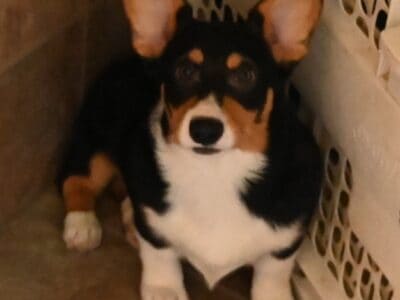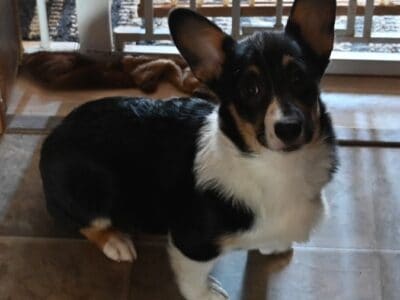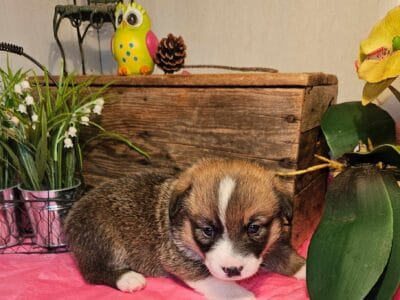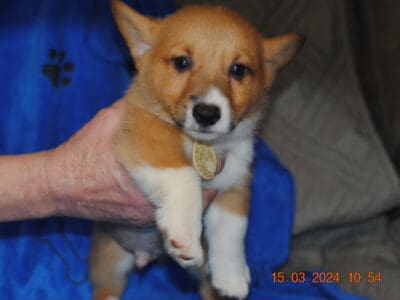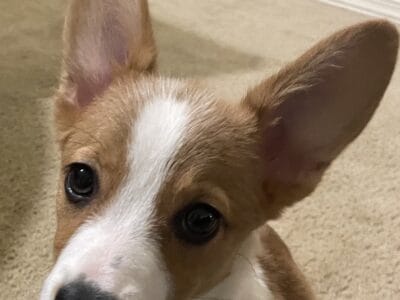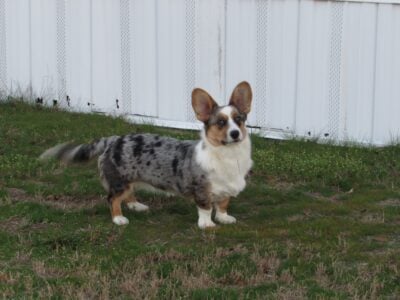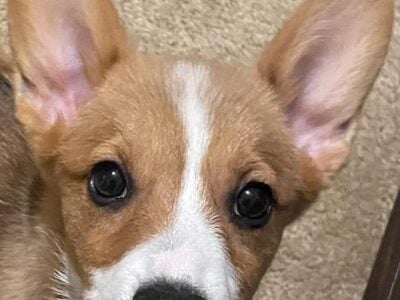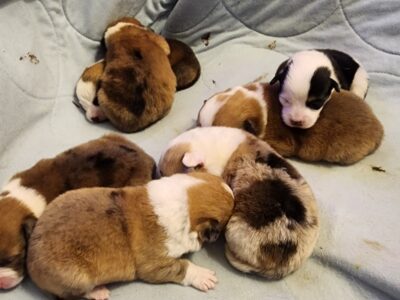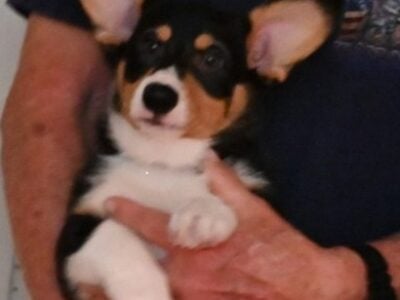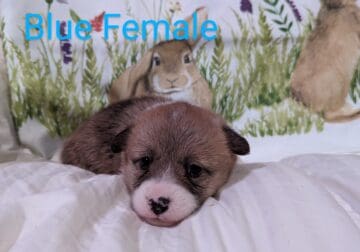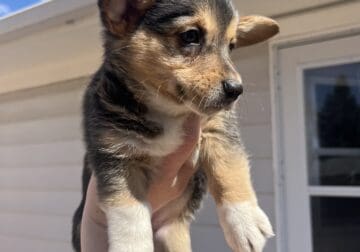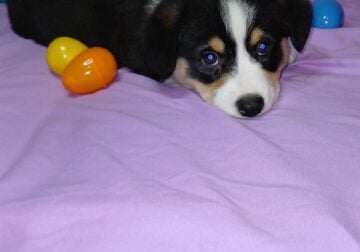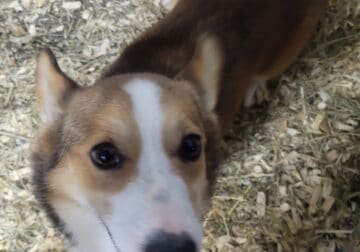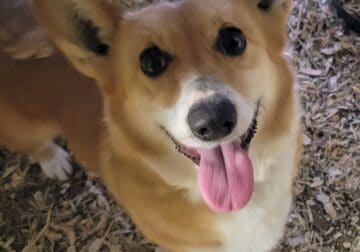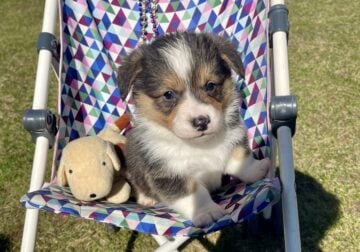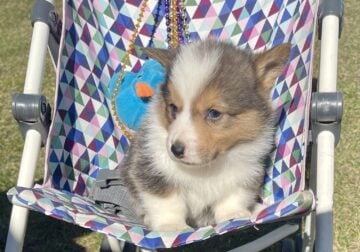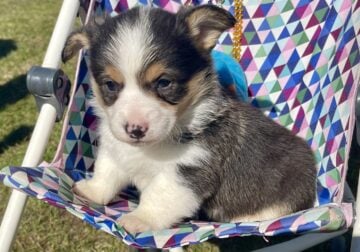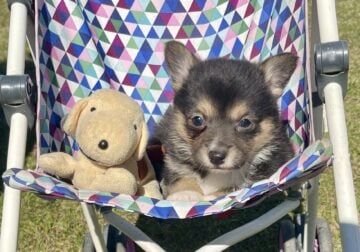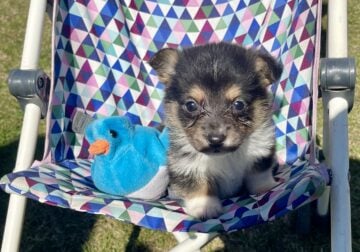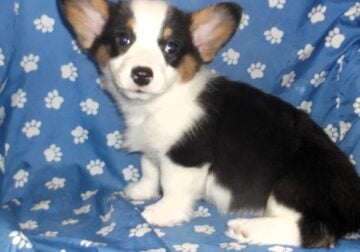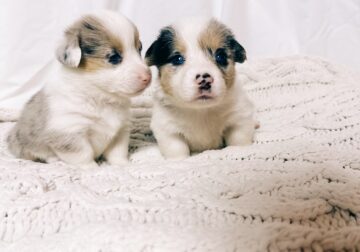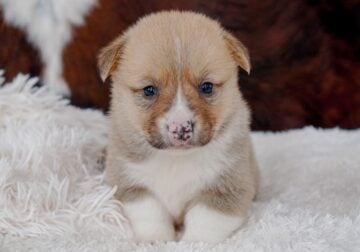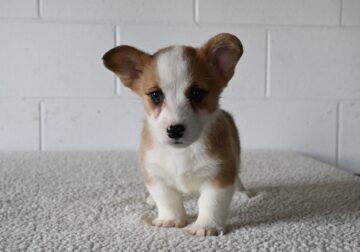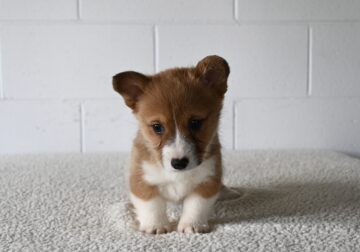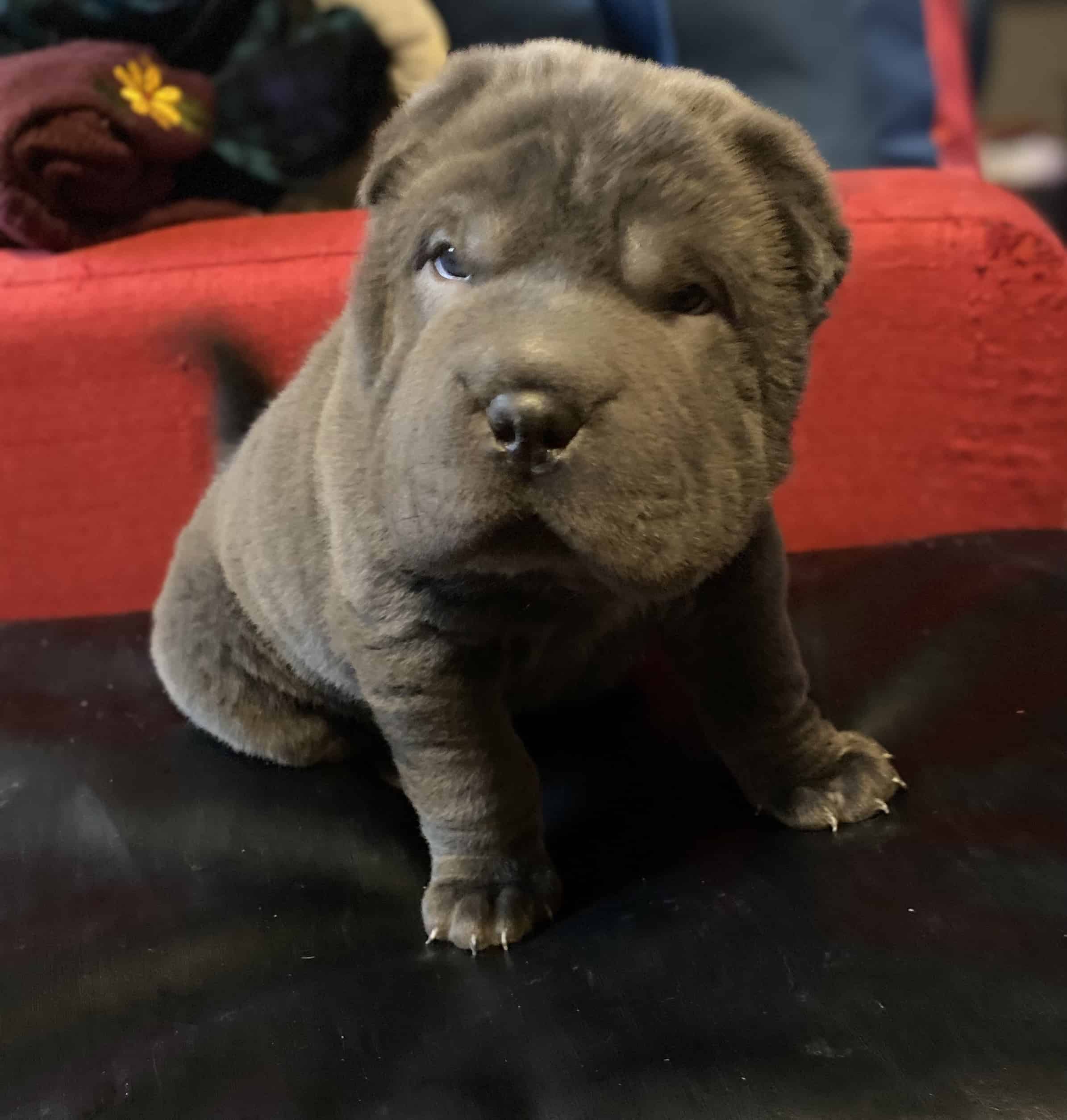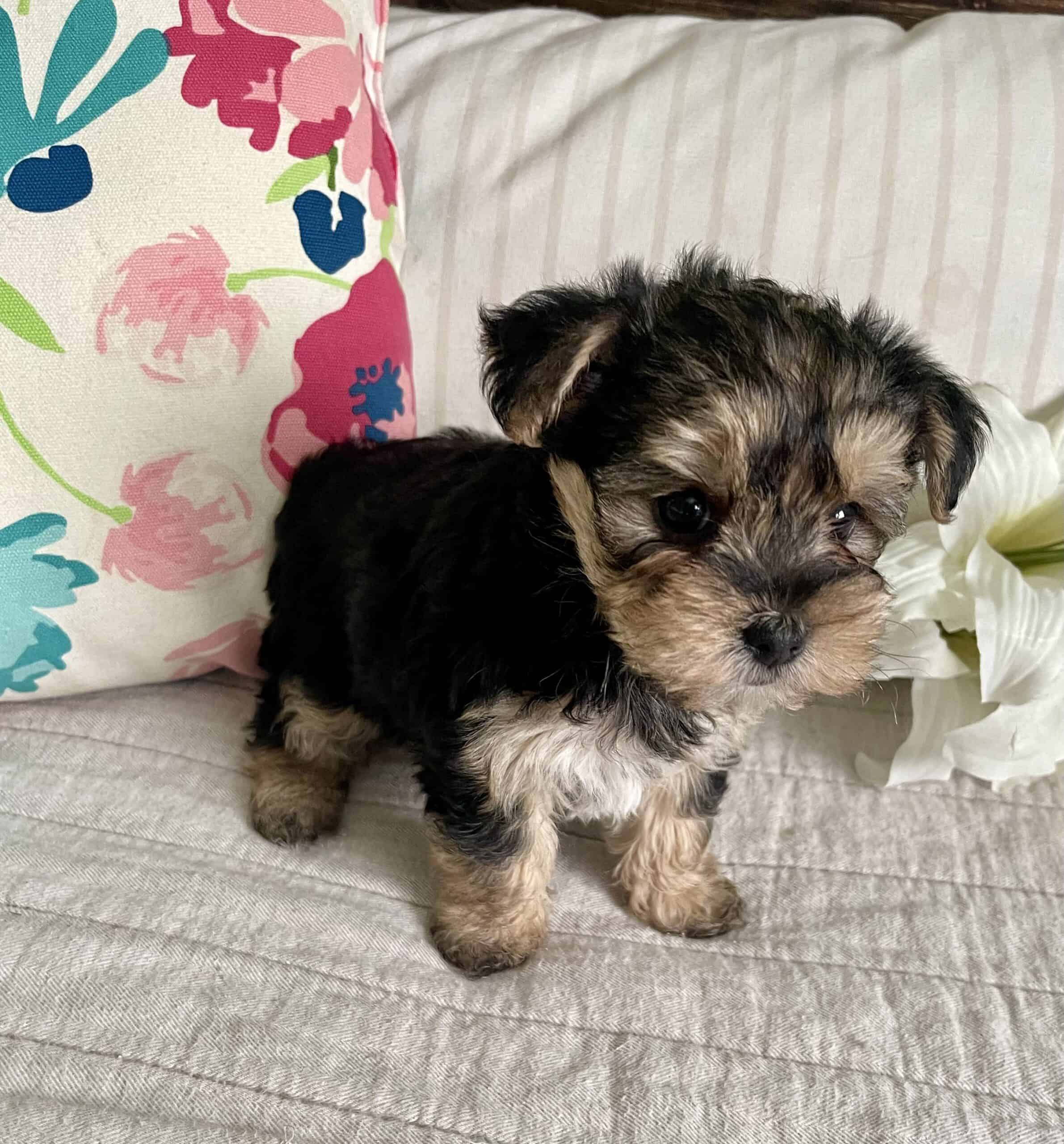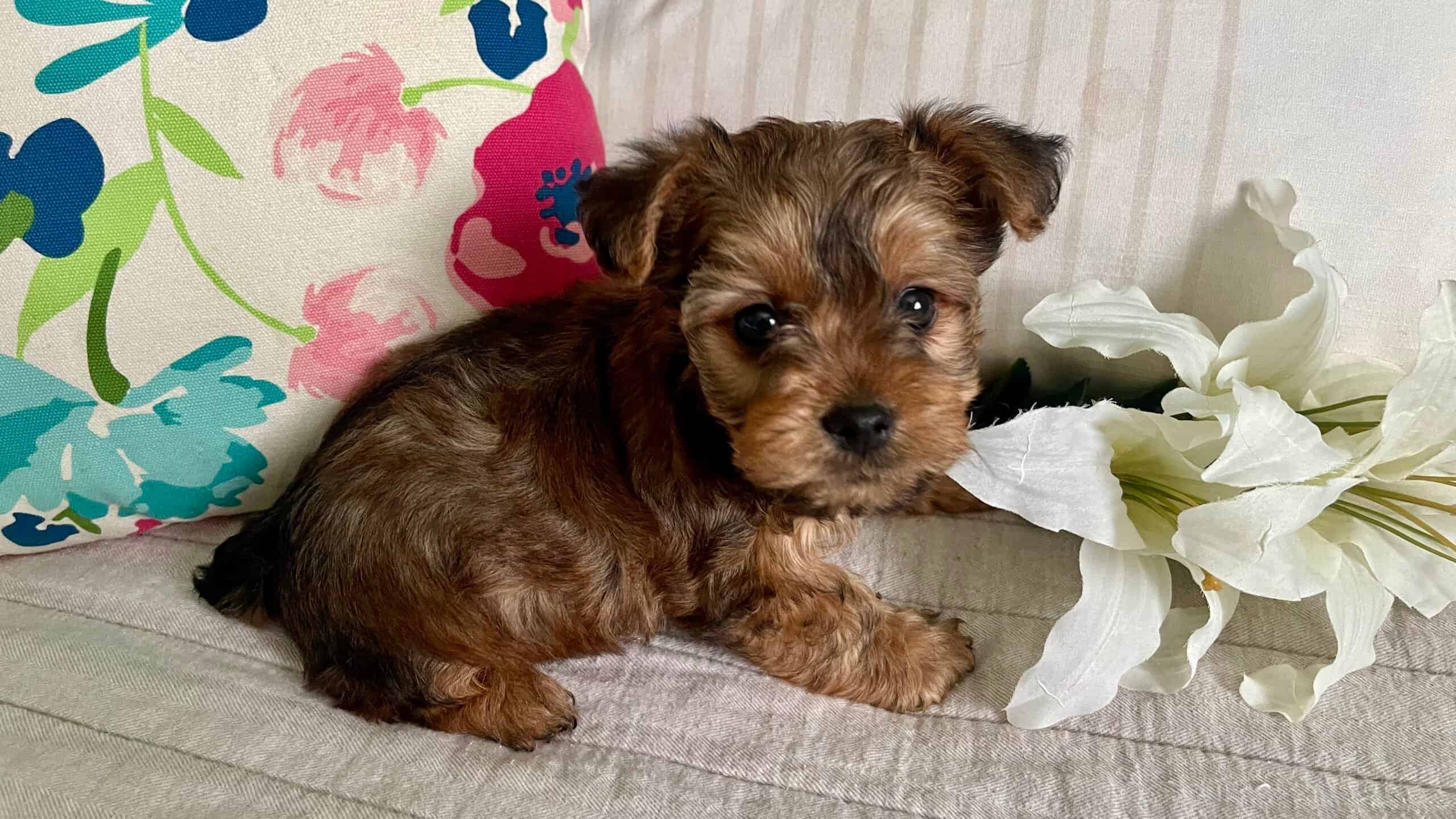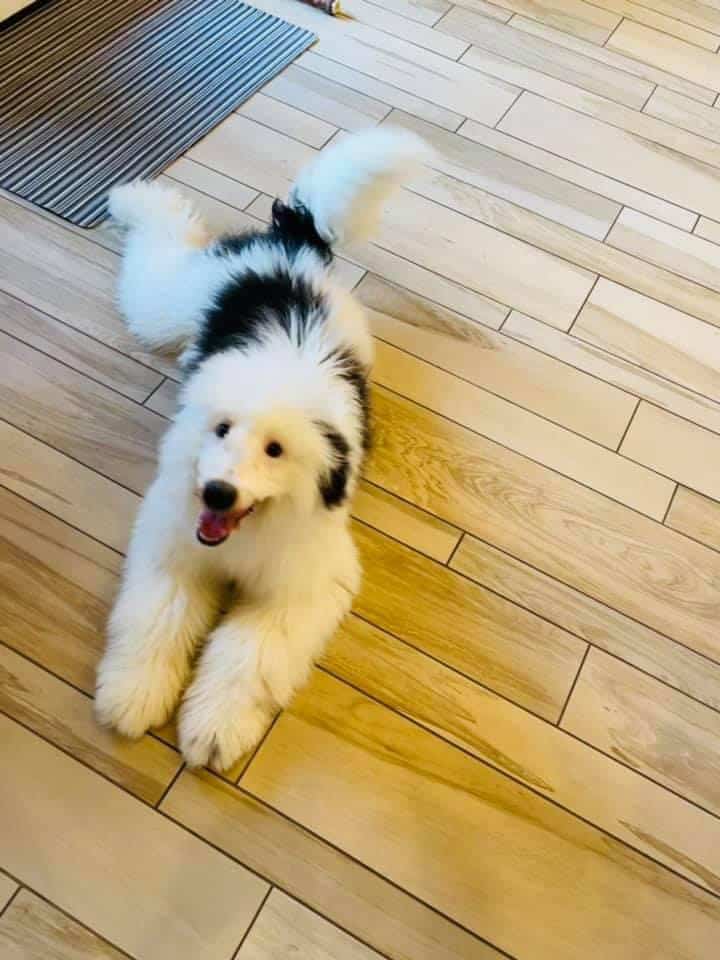Pembroke Welsh merle corgi Bridget
5725 West Millbrook Road, Remus, MI, USA
Pembroke Welsh Merle corgi Buffy
5725 West Millbrook Road, Remus, MI, USA
Welsh Pembroke Clarence
5725 West Millbrook Road, Remus, MI, USA
Welsh Pembroke Charm
5725 West Millbrook Road, Remus, MI, USA
Welsh Pembroke Clark
5725 West Millbrook Road, Remus, MI, USA
Welsh Pembroke Charlie
5725 West Millbrook Road, Remus, MI, USA
Welsh Pembroke Betsy
5725 West Millbrook Road, Remus, MI, USA
Welsh Pembroke Bob
5725 West Millbrook Road, Remus, MI, USA
FOR SALE MALE PEMBROKE WELSH CORGI PUPPY!
206 North Main Street, Mitchell, SD, USA
Corgi looking for loving new family
Huntington Beach, CA, USA
Popular Filters:
Corgi puppies $450
Corgi puppies for sale under $300
Corgi puppies for sale under $400
Corgi puppies for sale under $500
Corgi puppies for sale under $800
Corgi puppies for sale under $1 000
Corgi Puppies for Sale: Popular Short-Legged Herding Dogs
A Corgi for sale belongs to a group of medium-small, low-set dogs that belong to the herding class. Known for their prowess with cattle, Corgis do not fare nearly as well with sheep. Their extreme speed and lowness to the ground allow them to deftly outmaneuver kicks from ornery cows. The Corgi’s character has translated into a nimble, engaging, and fun companion. Corgis make excellent watchdogs, great partners for the active, and resilient playmates for kids and other dogs.
Caring for Your New Corgi
Corgi puppies for sale do not usually come with a care instruction manual, but the breed requires simple, straightforward attention compared to many others.
Feeding
Like all dogs, Corgis require a high-quality diet consisting mostly of proteins and fats. While most of the amino acids should come from meat sources, many diets draw additional proteins from grains like corn and starches or legumes such as potatoes, peas, or yams. The ingestion of carbohydrates by pet dogs remains a hotly contested topic, but your goal should be to ensure meat features in the top few ingredients. Carbohydrates with possible antioxidant benefits include certain berries and greens. A Corgi requires about 30 to 34 calories per pound every day. Dividing your dog’s food portion into two meals works most effectively. Working dogs need roughly twice the calories as average pets while sedentary and senior Corgis require much fewer calories. Puppies between three and seven months may need 50 to 70 calories per pound of bodyweight daily and should eat three or four times throughout a 24-hour period.
Grooming
Basic grooming you should provide for your dog are regular coat and teeth brushing, clipping the nails, wiping the face of eye sleep, and cleaning and checking the ears. Corgis have double coats, and you should brush them twice a week. During heaving shedding of the undercoat in the spring and fall, you may need to increase brushing to every day for one to three weeks. You must accustom your Corgi to brushing her teeth soon after her arrival at your home or the task will become challenging if not impossible. Aim to brush your dog’s teeth two or three times weekly. Check her ears every few days for redness, abnormal discharge, or a foul odor. Observe daily for any excessive scratching of the ears or head tilting. Finally, clip your pet’s nails every four to six weeks. Some owners use a Dremel tool with good success, but you may have to increase your frequency of work on your dog’s claws.
Training
Despite its small size, the Corgi can be a handful to control. Full of energy, Corgis of both types are also independent thinkers with a stubborn streak. They do not respond well to force. You must start training with your puppy from a position of confidence and persistence. Your Pembroke is just outside the top 10 smartest dogs, and your Cardigan is in the top 35. Therefore, you need to somehow combine repetition and creativity to avoid boredom or wondering interests. The other challenge to training Corgis is their nippiness from a herding background. You need to employ constant guidance of acceptable behaviors for your Corgi, or he can become a menace to people and a danger to himself.
Exercise
Corgis are naturally vivacious and alert. While you can create a sedentary Corgi, it is not advisable. Corgis are prone to obesity which is disastrous with their conformation. Also, lack of stimulation will likely lead to a destructive dog. An hour of daily exercise is ideal for your Corgi. About 20% to 35% of the activities should be strenuous and another 15% to 20% dedicated to training and socialization. Even adult dogs require ongoing training as it keeps them well-behaved and provides mental enrichment.
Apartment
Corgis are lively dogs that can do well in an apartment if they get plenty of exercise and you do not leave them by themselves for extended periods. They are small enough not to take up too much space. An advantage of a Pembroke in a condo or apartment is that she usually has no tail. Any Corgi will do better, however, with a large backyard.
Corgi Appearance
Two Breeds and a mix
Corgis were once recognized as two types of the same breed. As of 1935, the Pembroke Welsh Corgi and the Cardigan Welsh Corgi have been considered as two separate breeds.
Pembroke Welsh Corgi
- History – unclear, most likely originated in 1107 with ties to the Swedish Vallhund as their Spitz ancestor and crossbreeding with local Welsh cattle dogs; other breeds that possibly contributed – Schipperke, Keeshond, Pomeranian ancestors
- Country of origin – Pembrokeshire, Wales
- Original purpose – herded cattle and less commonly horses
- size – 10 to 12 inches tall; 25 to 30 pounds
- Life expectancy – 12 to 13 years
- Gait – fluid and efficient with good reach in front and drive from behind; no-frills and not much lift
- Coat – medium-long rather harsh outer coat, short dense insulating and weather-resistant underfur; slightly longer and denser hair on underparts and backs of upper legs, forms a ruff around neck, chest, and shoulders; moderate shedding year-round and heavy shedding in spring and fall
- Colors – fawn, black and tan, red, or sable; white markings common on underparts, muzzle, legs, chest, as a blaze down the center of the face, and neck (can be a collar); faulted – dilutes (blue or liver), black and white, or white on the body or ears
- Health – epilepsy (seizure disorder), intervertebral disc disease (back problems), degenerative myelopathy (progressive neurological disorder leading to paralysis), hypothyroidism (low thyroid hormone production), hip dysplasia, retinal dysplasia, progressive retinal atrophy (disrupts night vision and eventually leads to blindness)
- AKC – 1934 separated from Cardigan Welsh Corgi
The Pembroke Welsh Corgi is a medium-small dog with dwarfed legs that puts her low to the ground. Neither fine- nor heavy-boned, the Corgi is a hard worker and an active companion that should strike you with its intelligence and boldness. These Corgis have a wedge-shaped head betraying their Spitz ancestors. Many are born with a bobtail or have it docked at a few days old. Otherwise, a few may have the full curly tail, another Spitz trait. A Pembroke should be about 40% longer than she is tall. Her skull is flat between the ears and her stop moderate. The head should also appear chiseled with a tapering muzzle and resembling the appearance of a fox. A Pembroke Corgi’s eyes are oval-shaped and brown. The ears are upright and medium-sized with rounded tips. Corgis have a surprisingly long neck that should appear powerful and in balance with the rest of the body. The topline is level, the chest is deep, and the limbs are replete with hard muscles.
Cardigan Welsh Corgi
- History – around 985 BC from Teckel lines that also produced the Dachshund or from northern Spitz lines (a bit of controversy); some believe the Cardigan was a bridge between the Teckel and Spitz families; brought to Wales by the Celtics; many were crossbred with Pembrokes Corgis in the 1920s; unclear whether the Cardigan had a direct role in Pembroke Corgi ancestry
- Country of origin – Cardiganshire, Wales
- Original purpose – cleared areas ahead of cattle of predators and trespassing herds; later herded cattle
- size – 12 to 13 inches tall; 28 to 38 pounds
- Life expectancy – 12 to 15 years
- Gait – free and smooth strides with an apparent lack of effort; not much lift
- Coat – has a ruff around neck and shoulders and thicker, longer hair also on the backs of the thighs; long hair under the tail; like Pembroke coat with medium length, slight harshness to outer fur, and a soft thick insulating undercoat
- Colors – red, brindle, sable, black with tan points, black with brindle points, solid black, blue merle; white markings common on the chest, legs, muzzle, neck (can be a collar), the tip of the tail, and the underparts; faulted – the predominance of white, too much white on the head
- Health – progressive retinal atrophy (genetic), hip dysplasia (lower risk than Pembroke), IVDD (slipped disc)
- AKC – 1935 nonsporting, then working, then herding in 1983
Cardigan Welsh Corgis are slightly larger and longer than Pembrokes. They have larger ears that are a little less rounded at the tips. The head is not foxlike but is somewhat refined and chiseled with a tapering muzzle. Otherwise, several similarities are apparent like the strong arched neck, deep chest, and level topline. The tail is low-set but full, unlike the Pembroke. A Cardigan’s tail should reach at least to the hocks, and the dog carries it straight out when running as opposed to curled over the back. Other differences the Cardigan shows from the Pembroke are bowed front legs, less of a ruff around the neck, less chiseling in the head, a shorter muzzle relative to the skull, and heavier bone substance.
American Corgi
American Corgies have recently become more and more popular. It is not a recognized breed, but a mix. American Corgies are the result of crossing a Cardigan Welsh Corgi with a Pembroke Welsh Corgi.
Distinguishing Two Corgis by Color
Color patterns are also strikingly different between the two breeds of Corgi puppies for sale. If you see a solid black Corgi or a blue merle Corgi, you can be 99% sure it will be a Cardigan Welsh Corgi. A blue merle Corgi shows a marbling pattern between white and black hairs in her coat. She may have blue eyes or one blue and one brown eye. A tri color Corgi is either a tan-pointed or brindle-pointed dog with white markings. Any brindle Corgi or a Corgi with brindle points is going to be a Cardigan. A black and tan Corgi with white markings can be either a Pembroke or a Cardigan Welsh Corgi. Tricolors and other commonly shared shades will require you to look at other parts of the dog to determine which breed it is.
Choosing the Right Corgi Puppies for Sale Near Me
Choosing a Corgi for sale involves the consideration not only of physical and temperamental attributes but also whether you will be able to cope with the potential health problems. Puppies should come from parents where the breeder screened their eyes and hips. Other recommended tests on both breeds are a genetic screen for degenerative myelopathy and progressive retinal atrophy. For adult rehoming and rescue and shelter dogs, you may not have the luxury of either an in-depth history, family tree, or health tests. If possible, you should visit any puppies you are considering. Make sure your prospective pup looks well-cared-for and does not have signs of eye or nose discharge, vomiting, or diarrhea. The Corgi is not a shy breed, so do not pick the puppy cowering and trembling in a corner.
Corgi Temperament
Often, you can visit advertised Corgi puppies for sale near me and determine a little bit about their personalities. Experienced breeders frequently attempt to match a puppy’s personality type to your lifestyle. Corgis have several consistent themes in their dispositions.
- Bold
- Self-assured
- Animated
- Protective – combined with sharp bark makes them effective watchdogs; still, should not be aggressive
- Friendly and outgoing – Pembroke more so
- Need training around children – can be nippy, pushy, and inclined to herd children; otherwise, sturdy enough for vigorous play sessions
- Good with other dogs – watch with large canids; vulnerable to injuries
- Can get along well with cats
- Persistent
- A lot of stamina
Choosing between a Pembroke and a Cardigan Welsh Corgi for sale may seem difficult, but it comes down to a preference in looks and subtle personality differences. Pembroke Corgis tend to be more outgoing and trainable and, of course, have foxlike features and expressions. Cardigan Corgis have a tail and are slightly larger with
